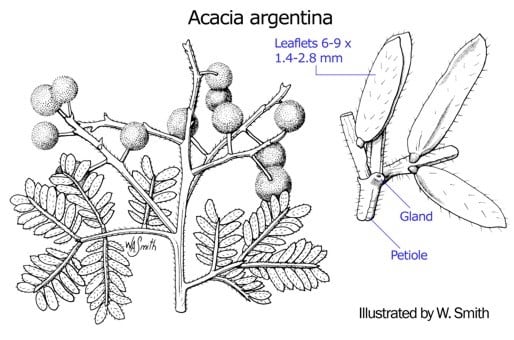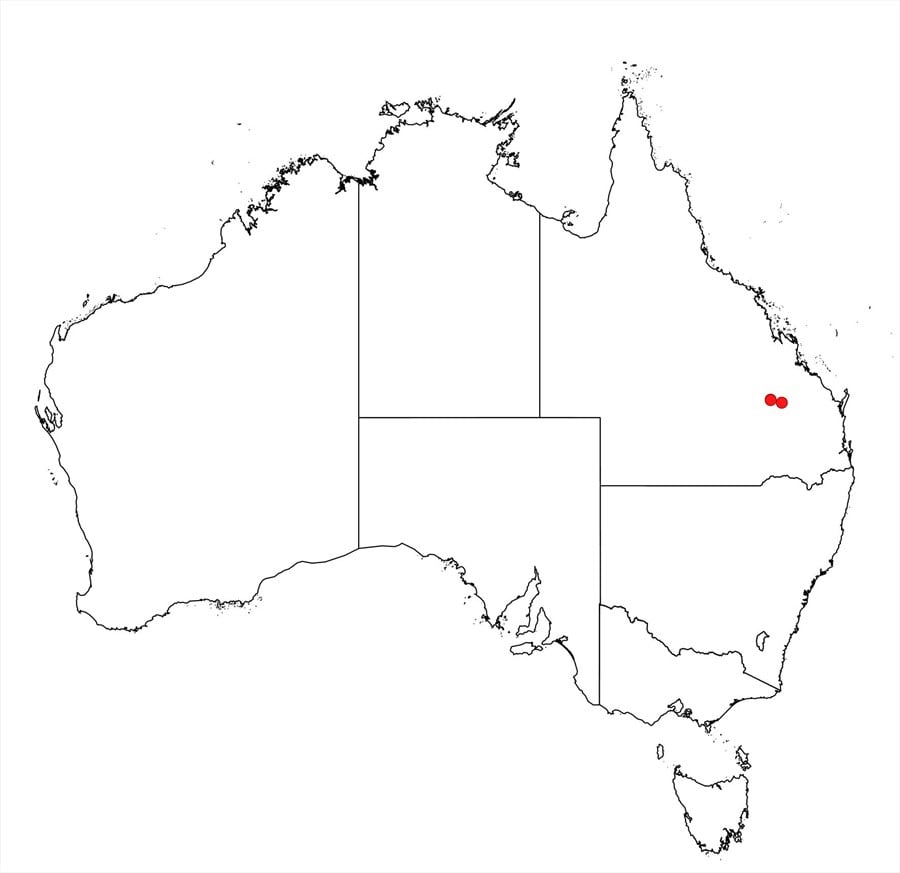Acacia argentina Pedley
WATTLE
Acacias of Australia
Family
Fabaceae
Distribution
Confined to the sandstone areas in the upper catchment areas of creeks draining into the Dawson R. N of Taroom, Qld.
Description
Shrub to 4 m high. Branchlets ± terete, pruinose, with a sparse to moderately dense indumentum of spreading hairs 0.3–0.5 mm long which extend to the leaf axes. Young foliage silvery grey tinged with yellow. Leaves grey-green to silvery blue; petiole 3–8 mm long, a poorly defined gland between or slightly below lowest pair of pinnae; rachis 5–15 mm long, jugary gland present or absent between most distal pair of pinnae; interjugary glands absent; pinnae 2 or 3 pairs, 13–20 mm long; pinnules 6–9 pairs, oblong, rounded at base and tip, 6–9 mm long, 1.4–2.8 mm wide, concolorous, glabrous or with scattered sub-appressed hairs on margins or lower surface, midrib obscure beneath. Inflorescences axillary racemes with up to 8 branches, 20–55 mm long. Peduncle 3–5 mm long, glabrous. Heads (described as yellow) 20–24-flowered. Flowers 5-merous; calyx obconical, somewhat angular, 0.6–0.7 mm long, lobes obtuse and c. 0.2 mm long. Pods seen only immature (possibly 6 to 8 weeks to maturity) linear, to c. 6 cm long, densely appressed hairy. Seeds not seen.
Habitat
Associated trees are Corymbia bunites, C. watsoniana subsp. watsoniana, Eucalyptus fibrosa subsp. fibrosa, Angophora leiocarpa and Lysicarpus angustifolius.
Specimens
Qld: Gwambagwine, Ruined Castle Ck catchment, P.I.Forster PIF19649 et. al. (BRI, MEL, NSW).
Notes
Acacia argentina differs from A. chinchillensis in its considerably wider leaflets, usually taller stature and more deeply divided calyx.
FOA Reference
Data derived from Flora of Australia Volumes 11A (2001), 11B (2001) and 12 (1998), products of ABRS, ©Commonwealth of Australia
Author
B.R.Maslin
This identification key and fact sheets are available as a mobile application:
URL: https://apps.lucidcentral.org/wattle/
© Copyright 2018. All rights reserved.







